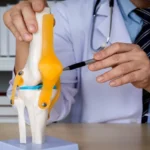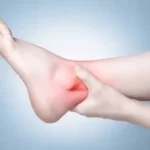Pelvic pain is a common health concern that affects women of all ages. It can range from mild discomfort to severe, debilitating pain that impacts daily life. Sometimes pelvic pain is temporary, but in other cases, it may signal an underlying medical condition that requires attention.
Understanding the causes, diagnosis, and treatment of pelvic pain is essential for women to take charge of their reproductive and overall health.
What is Pelvic Pain?
Pelvic pain refers to discomfort or pain that occurs in the lower abdomen, below the belly button. It may be acute (short-term) or chronic (lasting more than six months). Pain can be constant, intermittent, dull, sharp, or pressure-like.
Common Causes of Pelvic Pain in Women
Pelvic pain can result from various gynecological, gastrointestinal, urinary, or musculoskeletal conditions. Some of the most common causes include:
1. Gynecological Causes
- Menstrual cramps (Dysmenorrhea): Common during periods.
- Endometriosis: Tissue similar to the uterine lining grows outside the uterus.
- Ovarian cysts: Fluid-filled sacs on the ovaries that may cause sharp pain.
- Pelvic inflammatory disease (PID): Infection of reproductive organs.
- Fibroids: Noncancerous growths in the uterus.
2. Gastrointestinal Causes
- Irritable Bowel Syndrome (IBS)
- Constipation or gas
- Inflammatory bowel disease (IBD)
3. Urinary Causes
- Urinary tract infections (UTIs)
- Interstitial cystitis (bladder pain syndrome)
- Kidney stones
4. Musculoskeletal Causes
- Pelvic floor muscle dysfunction
- Hernias
- Lower back problems
How Pelvic Pain is Diagnosed
Accurate diagnosis is crucial to identify the underlying cause. Gynecologists and healthcare providers may use several methods, including:
- Medical history and physical exam: Reviewing symptoms, menstrual cycle, and sexual history.
- Pelvic exam: Checking for tenderness, infections, or abnormalities.
- Imaging tests: Ultrasound, CT scan, or MRI to detect cysts, fibroids, or organ issues.
- Lab tests: Blood work, urine tests, and infection screening.
- Laparoscopy: A minor surgical procedure to view reproductive organs directly.
Treatment Options for Pelvic Pain
The right treatment depends on the underlying cause. Common approaches include:
1. Medications
- Pain relievers: NSAIDs (ibuprofen, naproxen) for mild to moderate pain.
- Hormonal therapy: Birth control pills or hormone therapy to manage endometriosis or menstrual pain.
- Antibiotics: For infections like PID or UTIs.
2. Lifestyle and Home Remedies
- Heat therapy (heating pads, warm baths)
- Regular exercise and yoga
- Stress management and relaxation techniques
- Dietary adjustments (for IBS or digestive causes)
3. Physical Therapy
Pelvic floor therapy helps strengthen muscles and relieve tension.
4. Surgical Options
- Removal of cysts, fibroids, or scar tissue (laparoscopy).
- Hysterectomy (in severe cases where other treatments fail).
When to See a Doctor
Seek medical attention if pelvic pain is:
- Severe and sudden
- Associated with fever, nausea, or vomiting
- Accompanied by abnormal bleeding or discharge
- Persistent for more than a few weeks
Early intervention can prevent complications and improve quality of life.
Conclusion
Pelvic pain in women is a complex issue with multiple possible causes ranging from menstrual cramps to chronic conditions like endometriosis or fibroids. Accurate diagnosis is key to identifying the root cause and finding the right treatment. By combining medical care, lifestyle adjustments, and preventive strategies, women can manage pelvic pain effectively and improve overall well-being.
FAQs
1. Can stress cause pelvic pain?
Yes, stress can worsen pelvic pain, especially if related to muscle tension or conditions like IBS.
2. Is pelvic pain always related to periods?
No, pelvic pain may result from urinary, gastrointestinal, or musculoskeletal issues as well.
3. Can pelvic pain affect fertility?
Yes, conditions like endometriosis, fibroids, and pelvic inflammatory disease can impact fertility if untreated.
4. How is chronic pelvic pain different from acute pain?
Acute pain is sudden and short-term, while chronic pelvic pain lasts for six months or longer and often requires long-term treatment.
5. Can lifestyle changes really help with pelvic pain?
Yes, regular exercise, stress reduction, and dietary improvements can significantly reduce symptoms, especially for digestive or muscle-related causes.











